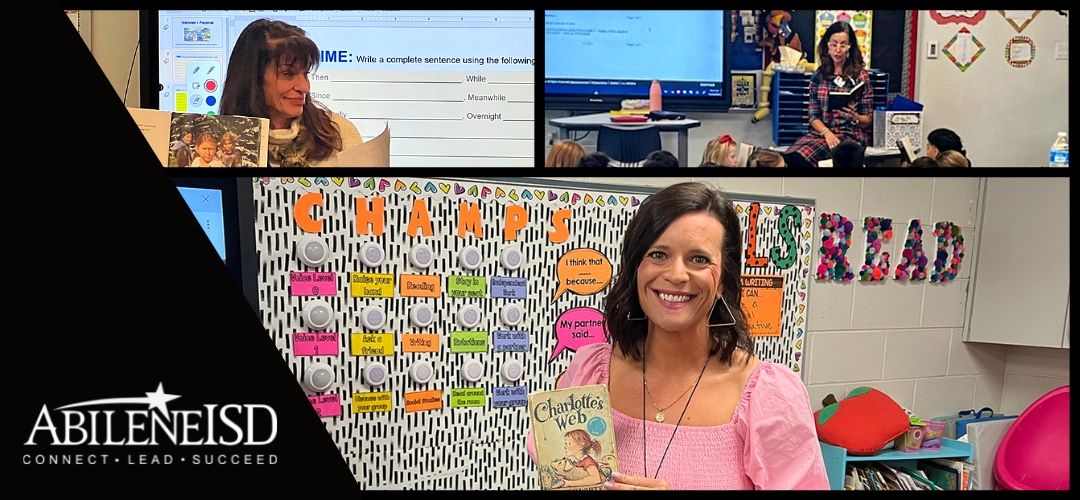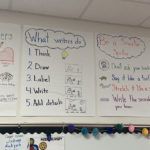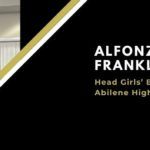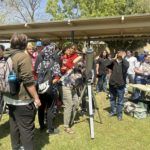One of the joys of elementary school is reading time. That golden hour for students is when they get to sit on a carpet or rug in the room designated for reading time with the teacher. Then the teacher takes out a book and reads it to the students. If you are lucky, you got to help the teacher read to the class.
It is often during these times when the love of reading is first born in students. But it also impacts teachers. Every year they will add new books to their rotation; books they hope will inspire their students to want to read more, to want to learn more, and to want to be the very best they can be in everything they attempt.
For teachers, those books are a reminder of why they got into education: because they love students and want to help them learn and be the best versions of themselves.
But some books can never be replaced. Classics – or even newer books that have taken their place as teacher favorites – are read each year to elementary students as teachers work to instill the love of reading in the children.
We asked five elementary teachers about their favorite books, why they read them, and what makes them special. Here are the responses from three teachers. We will share the responses from the other two teachers in December:
AMY HESS
Third Grade
Thomas Elementary School
Q: Of all the books out there for elementary-age students, which one is your favorite and why?
Hess: My favorite chapter book to read with my students each year is “Charlotte’s Web.” It’s a classic that is full of imagery, great vocabulary, and messages of true friendship.
Q: How did you come to love this book?
Hess: When I was young my parents would read with me each night. I have vivid memories of my dad lying in bed with me and reading a few chapters a night of “Charlotte’s Web.” He would use different voices and his reading to me began to make reading come to life. I still have the copy my dad read to me, and I read from it each year. I love telling my students about the sweet memories this book holds for me and I hope me reading it to them builds the same love for reading I now have.
Q: What do you hope your students learn from the book?
Hess: I love the themes of friendship and loyalty. I love that Charlotte and the other animals rooted for Wilbur and worked tirelessly to keep him alive and didn’t expect anything from Wilbur in return. I hope my students learn that in true friendships we celebrate each other, we take care of each other, and we each offer different strengths in friendships that make each other better.
Q: Do you learn new things with each reading, or have you learned just about everything there is to know in the book?
Hess: I feel like every time I read “Charlotte’s Web,” I’m able to relate to the characters in a new way. Now that I’m a parent, I tend to relate to Fern and her deep love for Wilbur. I’m able to connect to different characters and share those connections with the class, depending on friendships in that season of life.
SUSAN PATE
Third Grade
Austin Elementary School
Q: Of all the books out there for elementary-age students, which one is your favorite and why?
Pate: After teaching for 27 years there are so many books that I love. I truly can’t just choose just one. I often read the first in the series with my children so that they can be exposed to a variety of genres. Three of them are “Dying to Meet You,” “Earthquake Terror,” and “The Beast in Ms. Rooney’s Room.”
Q: How did you come to love these books?
Pate: Our district Instructional Resource Library has these books available in class sets. Something about a child having a “novel” in their hands helps them to connect further to a book. If I can spark that first interest in the series, they are more than likely to seek another book just like it. It helps to build their confidence as well and know they have been successful with the first book. They are eager to try another one.
Q: Do your students enjoy them as much as you?
Pate: Yes! They love the play on words in “Dying to Meet You” (i.e., Anita Sale is a realtor … “I need a sale”). They are hooked on the “danger” in “Earthquake Terror” and are intrigued about how a special needs child can survive a flooding island. In “The Beast in Ms. Rooney’s Room,” many of the children identify with Richard, who is a struggling reader but a great artist. They connect with children just like themselves.
Q: What do you hope your students learn from the books?
Pate: Along with fluency, comprehension, and basic reading skills, they learn to predict future happenings., infer what might be the next logical event, and even retell their favorite parts in our book groups. I want them to find a “good fit” book for themselves. I want them to connect to the characters in the books, laugh out loud at the funny things that happen, and empathize when things don’t go well. I hope they can see a bit of themselves in some of the characters and learn they CAN read “big” books.
Q: Do you learn new things with each reading, or have you learned just about everything there is to know in the books?
Pate: I truly learn something new each time I read with my children. We all come from such different backgrounds, but we find commonalities on the pages of books. This teaches us all that we can learn new things and appreciate the viewpoint of others.
JULIA SIEWERT
Fourth Grade
Bowie Elementary School
Q: The book Each Kindness by Jacqueline Woodson is your favorite book to read to students. How did you come to love this book?
Siewert: About five years ago, I read the book to my second graders. It was so quiet that I thought they were bored and falling asleep! But they were mesmerized, not only by the beautiful watercolor illustrations but the sweet story. I’ve taught fourth grade for three years now, and they love it as much as younger kids.”
Q: What is it about this book that makes you love it the way you do, and do your students enjoy it as much as you?
Siewert: I love this book because it reminds me of my personal goal of following the St. Francis of Assisi prayer. I also teach uniqueness in all aspects of learning. I want to promote intrinsic values in students, so they recognize, appreciate and respect others. No trophy is big enough can replace that feeling. My students enjoy being different and are proud of their opinions. I love that about them!
Q: What do you hope your students learn from the book?
Siewert: I hope students can learn to be kind and what it means to be empathetic. And, yes, this book has educational value: genre, author’s purpose, message and craft, personal narrative, figurative language, ethics, descriptive language, and making connections. The book is full of truisms, morals, and examples of the “Leader in Me” habits. After reading the book, the kids’ comments are to be kind, seek first to understand then to be understood, find your voice, don’t wait until it’s too late, don’t judge a book by its cover, treat neighbors like you want to be treated, use kindness so there are no regrets, follow your heart, choose what is right, not what others say.
Q: Do you learn new things with each reading, or have you learned just about everything there is to know in the book?
Siewert: Good books have a new meaning that you can apply on that day or every time you read them!












